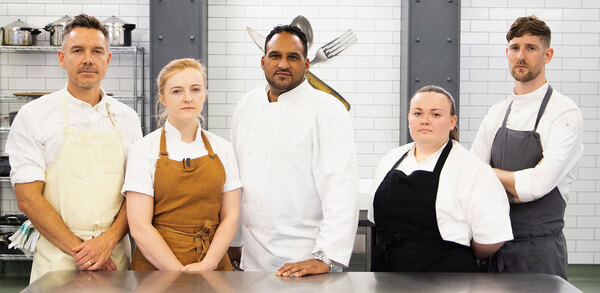Inside Track: Customers' perception of value doesn't always add up, says Neil Rankin
When it comes to diners’ perceptions of value compared to price, the numbers don’t always add up, says Neil Rankin
Value may be one of the most important yet most misunderstood words in modern language. It is something which has no anchor in reality – only in our individual perception of it. And this is probably why the concept is such a nightmare for restaurants.
Recently, I was arguing (strongly discussing) the price of a product with someone online. They were confused as to why a double-stacked burger (two buns, two patties, two lots of condiments – basically two single whole burgers, one on top of the other) could cost twice as much as a single whole burger. The maths for me is childishly simple. It costs twice as much to make and contains twice the ingredients, so it costs twice as much to buy. His view was that it might be twice the size and double the product, but it was also still “just a burger”, so therefore should not cost as much, even though the single burger he felt was very good value and this was two of them.
Mathematically, he’s wrong, but he’s actually right because maths is useless in the face of value perception. Look at art, houses, fashion and the stock market, and you’ll see that value and cost do not share a symbiotic relationship. It’s more like one of my relationships: fraught with a lack of consistency, cohesion, fairness and logic.
Back when I owned sandwich bars, I opened a concept where people made their own sandwiches. I was similarly curious as to why, when someone made a sandwich that weighed the same as a small child, they were confused when it cost more than a standard offering from Pret. I actually kept a Pret sandwich under the counter for comparison to explain (more times than I should) how one was considered a sandwich and the other was a week’s food shopping for a whole family stuffed between two slices of bread.
We all have a formula for what something should cost and, as far as I know, we all apply the same basic maths when setting up a restaurant, but there is no formula for value. For instance, if we think the value of a sandwich is £2.50-£5 and the value of a pizza is £6-£20, it makes no difference if the pizza is made with fewer or cheaper ingredients (which it often is), is bought in a cheaper location or is made by fewer people. That price field is where both products are allowed to play in and going outside that will be considered unwise, even though neither are based on maths or logic.
If you take the coffee scene, over the past 10 years there have been instances that have made my blood boil, such as machines in service stations knocking out a 10p product for £3 with no staff or rent to pay.
However, the upside of this is that the over-valuation of coffee has enabled us to fund a far superior product on the whole, which would not have been possible if the product had a lower value.
The people who challenge value are the ones with the hardest job, but they are also the sole leaders in driving change in favour of better choices for everyone. It’s a fight that is all about explaining to your customers how you justify your prices and why they should pay them. This is an explanation you have to do over and over again, and sometimes very, very slowly, until eventually it becomes something they just accept.
If the consumer is not open to paying for better-paid staff, better-sourced food, better locations, better sustainability and better nutrition, it may be a hard battle, but it’s one that’s worth every second, even if you have to tell them again and again that 2+2 doesn’t equal 1.















